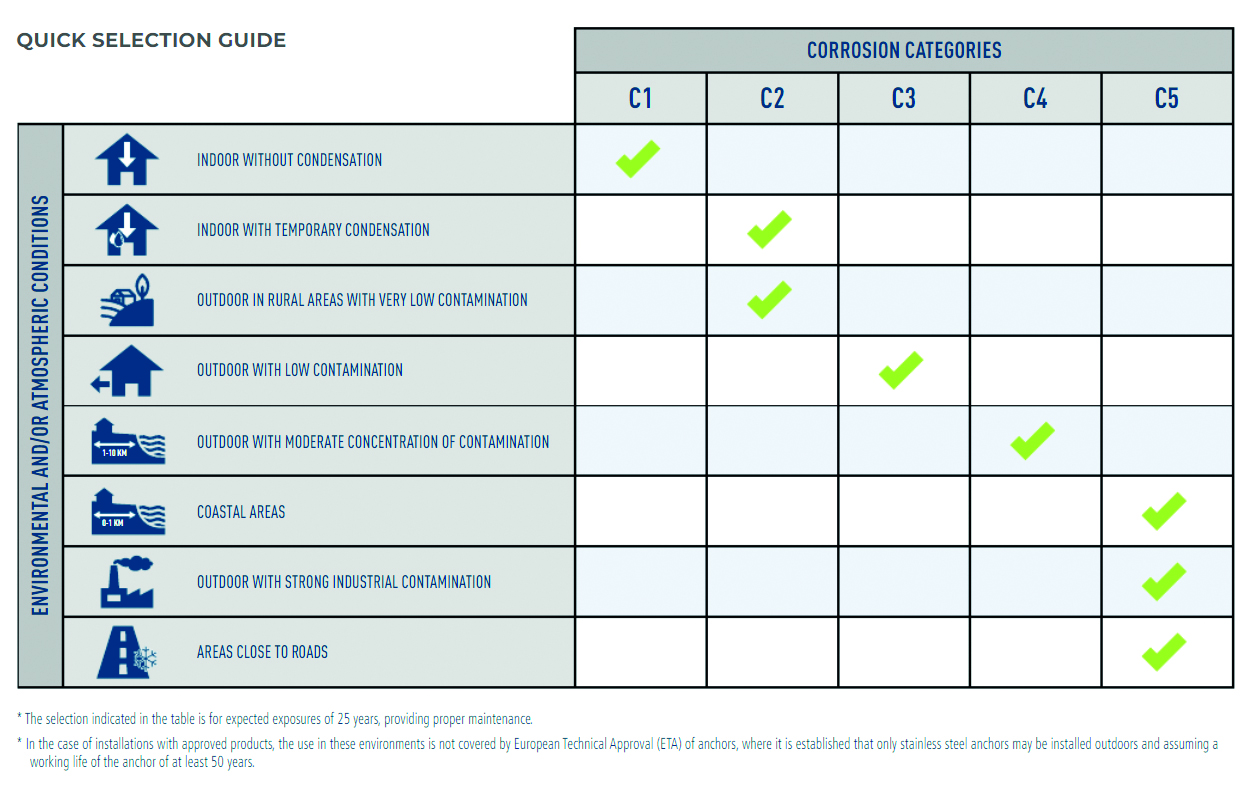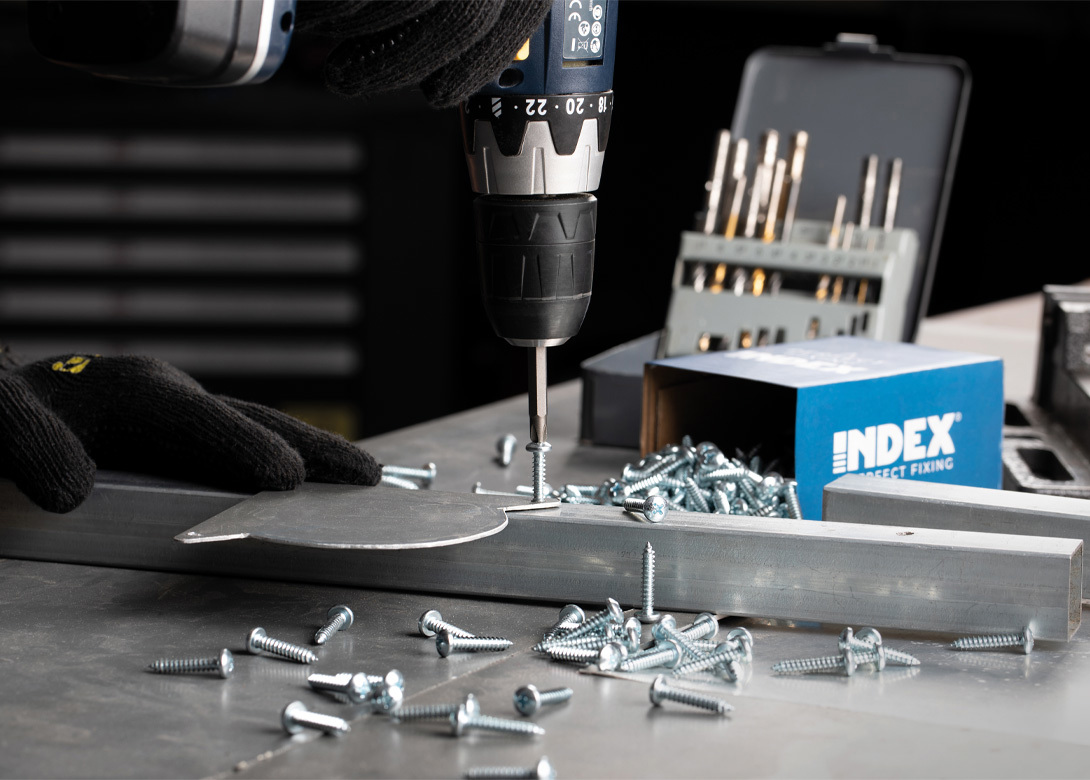Choose the right screws for what you need
27 March 2023
Screws constitute a fundamental part of any DIY or construction project. Here INDEX – A Perfect Fixing looks at the wide variety of types available and how users ensure they choose the right screw.
Depending on their size, thread, head or tip, different types of screws are effective for different purposes. For instance, a fundamental part of a screw is its head and drive, which together determine the strength and torque of a screw.
There are a variety of different types of head and drive types available within the market, including:
- Phillips screws: This type of screw is one of the most used and has slots in the head in the shape of a cross. The heads are designed to avoid the screwdriver slipping, thus facilitating use. The Phillips screw doesn’t usually require a lot of torque when installing and is very useful, for example, for work with wood.
- TORX® screws: TORX® screws have grooves in the shape of a star with six points and are very resistant. The tamper resistant TORX® screw, especially designed to be extra secure, falls within this classification. It is characterised by its protruding pin in the middle of the six-point star that requires a special tool to turn.
- Slotted-head screws: Slotted-head screws have a slot in a vertical line and are perfect for joining together two pieces of wood. It is one of the most commonly used types of screw and is recommended for medium torque jobs.
- Socket screws: These screws have a cylindrical head with a hexagonal hole in the middle. To work with them, you need an Allen key, a tool capable of exerting greater torque than a conventional screwdriver.
- Pozidriv screws: Pozidriv screws are similar to Phillips screws but have greater torque as they have eight points of contact in the slots, which guarantees good fixing to the surface. They are ideal for work with materials that require a strong hold.
- Hexagonal head screws: These screws have a hexagonal head. Unlike the other screws, hexagonal head screws do not have any slots and are perfect for fastening metal parts together with the right tool. Also, screws with a hexagonal head that include a flange don’t need to have a washer incorporated.
Classifying screws by use
In addition to the different screw heads that are on the market, it is also fundamental to know about the different uses each one has according to the material the user will be working with or the particular features that apply. Some of the most common types of screw are detailed below:
- Wood screws: This classification includes various types, but coach screws are the most common. The distance between the thread lines is greater than with conventional screws, which facilitates a much stronger joint thanks to the fact that the screw fastens to the wood more securely. If the screws are going to be visible, there are different types of covering to make the installation more aesthetically pleasing.
- Self-drilling screws: Self-drilling screws are those that, as their name suggests, don’t need prior drilling to install them as their tip acts as a drill. Within this classification you’ll find screws for roofs and façades, which are principally hex head self-drilling and favour the joining of metal elements. They have a washer or flange incorporated with EPDM rubber that seals the material being worked on.
- Screws for laminated plasterboard: Most of these screws have a trumpet head, which allows easy insertion of the screw into the material and provides a gentle but strong torque. Depending on the thickness of the material to be drilled, the tip of the screws for plasterboard may be sharp, perforating or self-drilling. Additionally, the thread tends to be wide in most cases. This guarantees the perfect, long-lasting fastening of laminated plasterboard panels to each other or to wood.
- Sheet metal screws: This group of screws includes a large variety of different types of screw, diameters, and lengths, depending on the flexibility of the material to be perforated. They are designed to fasten metal elements to each other or to other materials. In this case, they require prior drilling to guarantee the fixing. They have a fine thread, which means they can be used at the edges of the material to be fixed.
- Standardised screws: This classification includes all screws with a metric thread, which are those where the thread follows standard measurements used internationally. There is a large variety of types of head and they can be half thread with a neck or full thread covering the whole body. Another main characteristic is that metric threaded screws have no tip. They are mainly used in machinery with nuts or washers to achieve better fixing of the elements.
Types of screws according to material
Another thing to bear in mind when choosing a screw for any project is the material used. Taking this classification into account, different screws are suitable for different surfaces. The most common are steel screws with a biochromatic or zinc coated finish, recommended for interiors as they have an average level of corrosion resistance. If work is to take place outdoors, stainless steel screws (A2 and A4) are the best option as they are highly corrosion resistant in outdoor environments and/or in coastal areas. Additionally, as we have indicated before, biochromatic screws are suitable for projects with wood if they are going to be visible as they make the project more aesthetically pleasing.
Within this same point, it is important to consider the different categories and levels of corrosion in order to make the right choice as shown in the following table:

Therefore, in heated spaces with low humidity and dry or cold areas, we recommend opting for classification C1. However, for spaces with frequent condensation and warm, subtropical areas, the C5 corrosion category is perfect.
In short, the choice of the different types of screw will depend on the characteristics of each application. It is important to be aware of their differences to find the screw that will perform best in each case. At INDEX – A Perfect Fixing we specialise in fixings that suit customers’ needs and have a wide range of screws for all types of application.
www.indexfix.com


